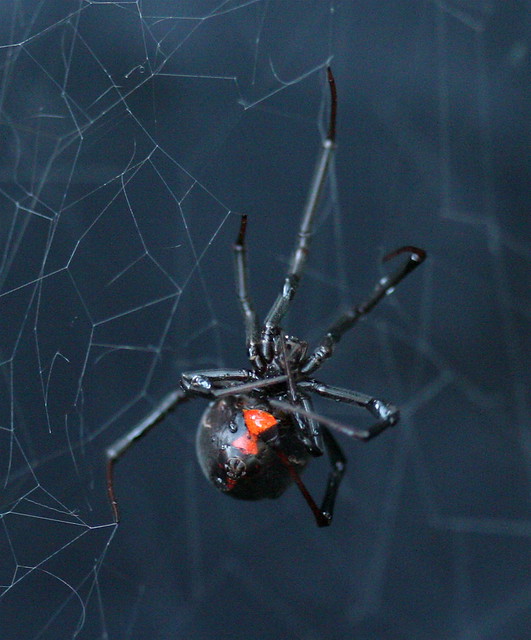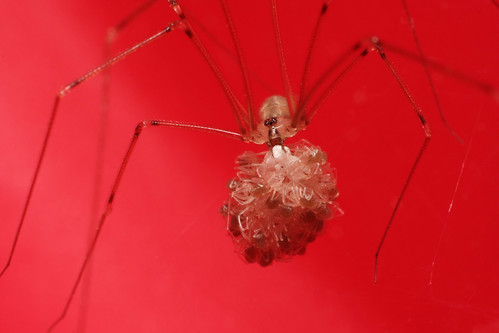
 Common buckthorn has been present in the U.S. since the early 1800's when it was introduced by settlers though landscaping. Unfortunately this fast growing plant which can spread by both roots and seeds has become a widespread invasive species. Common buckthorn is found along forest edges, in between farm fields, along roadsides, in parks and campgrounds, and in railroad and power line right-of-ways. Within these habitats, common buckthorn reduces light penetration to the forest floor, resulting in a loss of native herbaceous plants often replaced by common buckthorn seedlings.
Common buckthorn has been present in the U.S. since the early 1800's when it was introduced by settlers though landscaping. Unfortunately this fast growing plant which can spread by both roots and seeds has become a widespread invasive species. Common buckthorn is found along forest edges, in between farm fields, along roadsides, in parks and campgrounds, and in railroad and power line right-of-ways. Within these habitats, common buckthorn reduces light penetration to the forest floor, resulting in a loss of native herbaceous plants often replaced by common buckthorn seedlings. Below is a picture of an invaded forest floor covered with buckthorn seedlings.

In addition to negatively impacting natural areas, common buckthorn also has a significant impact within agroecosystems. This invasive plant is the overwintering host of the soybean aphid. Soybean aphids spend the winter in the egg stage on common buckthorn, in the spring the aphids hatch and feed for 1-3 generations before winged aphids are produced that migrate to soybean fields. During the summer multiple generations of winged and wingless aphids are present in soybean. Aphid populations can reach 1,000's per plant, reducing yield and increasing pesticide use to control their populations. In the fall, when soybean plants begin to dry soybean aphids migrate back to common buckthorn to mate and deposit their overwintering eggs. One interesting fact about the soybean aphid is that during the entire year the only time that male aphids are present is in the fall, when males and females mate to produce overwintering eggs. During the rest of the year, only females are present and they are clonal, reproducing without mating! Below is a picture of winged and wingless aphids on common buckthorn.

The presence of soybean aphid not only damages soybean production but also has led to increased abundance of the multicolored Asian lady beetle. We have had several posts about this beetle, it has been implicated in the decline of native lady beetles and interactions between this insect and native lady beetles is one research focus of Chelsea Smith.
The Buckthorn Watch Program is a new regional citizen science program which will examine the relationship between these invasive species. This project was funded by the USDA and is a corroborative effort of the ALE Laboratory and Dr. Andy Michel at OSU, Dr. Doug Landis and Megan Woltz at Michigan State University, and Dr. Matt O'Neal at Iowa State University. We are currently looking for volunteers willing to help us map the distribution of this plant across the north central U.S. To register as a Buckthorn Watch member visit our
new website. Check back in on this site as I continue to add new information, including a video describing the Buckthorn Watch program!
In addition to reporting common buckthorn infestations, we are also tracking the utilization of common buckthorn by the soybean aphid. Each spring and fall we will hold an Aphid Hunt, where volunteers will survey common buckthorn for soybean aphid. Anyone who reports a common buckthorn infestation is able to participate in
Aphid Hunt.
I know that we have blog readers outside of Ohio who would like to participate in our Buckeye Lady Beetle Blitz program. I am excited to introduce this new, regional project and I hope that you will help us to reduce the impacts of this invasive plant!
 My first field season is officially done! The perennial flowers have been planted in half of my collaborator's farms, and will be managed by the farmer for a year before they are allowed to fully grow. In my two test sites in West Salem and Piketon I harvested the pumpkins that we studied back in August. In order to assess the level of pollination, Ian and Chris have been counting the seeds in the fully-developed pumpkins like the ones in our Piketon site pictured above.
My first field season is officially done! The perennial flowers have been planted in half of my collaborator's farms, and will be managed by the farmer for a year before they are allowed to fully grow. In my two test sites in West Salem and Piketon I harvested the pumpkins that we studied back in August. In order to assess the level of pollination, Ian and Chris have been counting the seeds in the fully-developed pumpkins like the ones in our Piketon site pictured above.

































